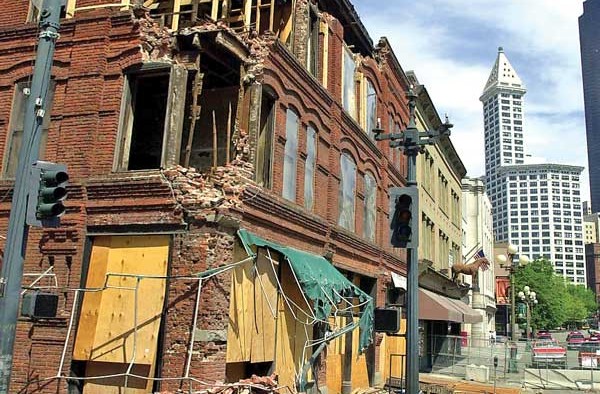 Natural Sciences
Natural Sciences
Shake, Rattle, and Roll

When a major earthquake was on the verge of rupturing just north of San Francisco in August 2014, the city was alerted nine seconds in advance.
That might not seem like much time, but it’s more than enough for automatic systems to stop commuter trains and elevators, open firehouse doors, or alert a doctor to cease a delicate surgery. That’s the benefit of an “earthquake early warning system,” a project proposed for the Northwest and one that is gaining steam, a result of efforts of UO geologists and their colleagues at universities in Washington and California.
The federal government has set aside $5 million to bolster a prototype called “ShakeAlert,” including the construction and upgrading of about 150 seismic sensors to improve the speed and reliability of warnings. Then last fall, more than 40 House and Senate lawmakers came together to urge the president to put $16 million annually into the budget of the US Geological Survey to bring the system closer to reality (the capital cost is roughly $40 million).
Professor Doug Toomey and Assistant Professor Amanda Thomas are helping lead the project (visit www.socc.edu/geology to click to a video lecture by Toomey on the issue).
Toomey and other university officials were in Washington, DC, recently to attend a White House event on earthquake early warning systems. Meanwhile, the Eugene Water and Electric Board—the largest public electric and water utility in Oregon—is working with the UO to place four seismic sensors on its hydroelectric facilities, canals, and water treatment plant.
It’s trite but true: during an earthquake, every second counts. When triggered by the first vibrations from a temblor, an early warning system can send an alert at the speed of light—outrunning a quake’s slow-moving “S-waves,” which do the real damage.
A fully operational system, experts say, could provide critical minutes of advance warning.
“Earthquake early warning systems can really help with decreasing injuries and saving lives,” Toomey said. “Given a minute of warning or so, people would already be in a secure spot when the quake hits, and because of that they would get hit by less debris.”
Other members of the UO’s geological sciences department are part of the effort to help the region prepare for the catastrophic earthquake expected in the future: Becky Dorsey, department head, recently spearheaded a public forum in Eugene with Toomey, Thomas and Ray Weldon, another department geologist. Emilie Hooft, an associate professor, has been involved as well, and the UO team also includes researchers Leland O’Driscoll and Dennis Fletcher.
—Matt Cooper
Photo caption: Cadillac Hotel, damaged in Nisqually earthquake near Seattle in 2001 (Credit: CC Erik Stuhaug/Seattle Municipal Archives by-2.0)


 Twitter
Twitter Facebook
Facebook Forward
Forward